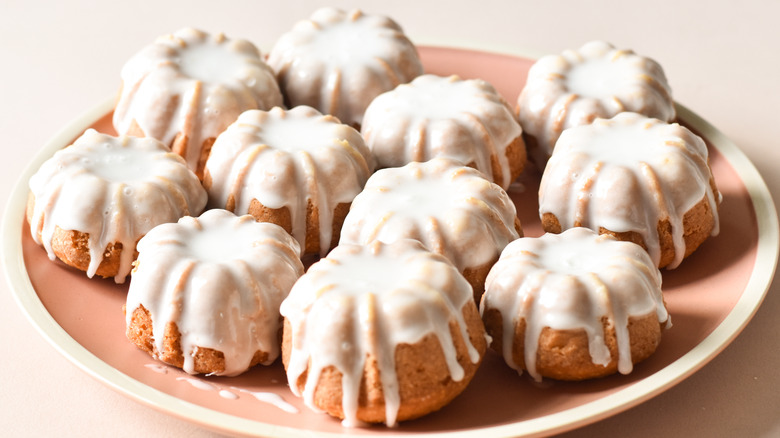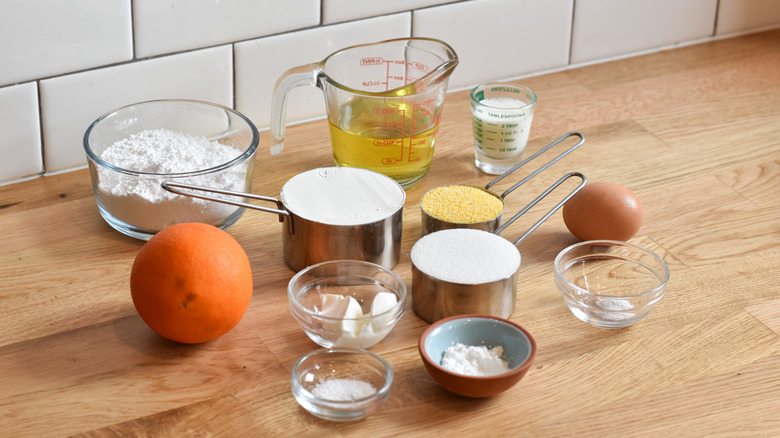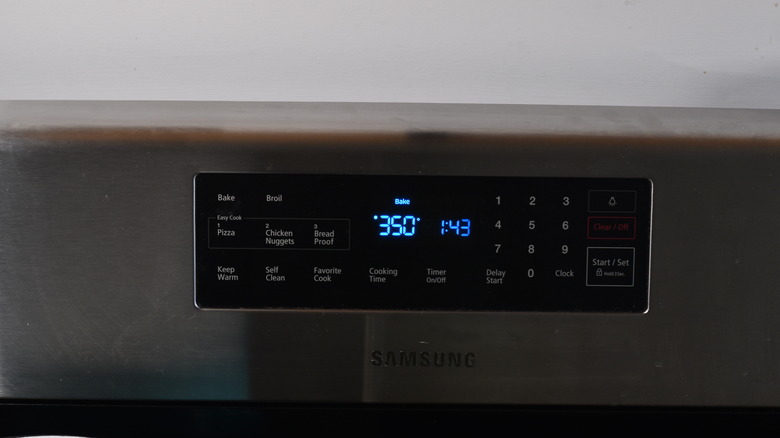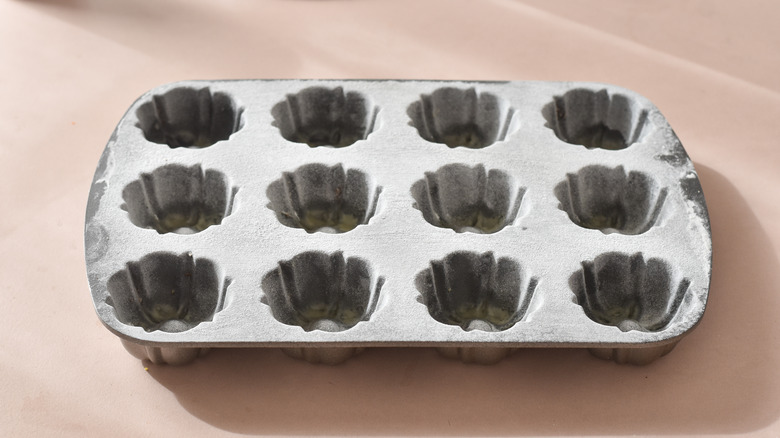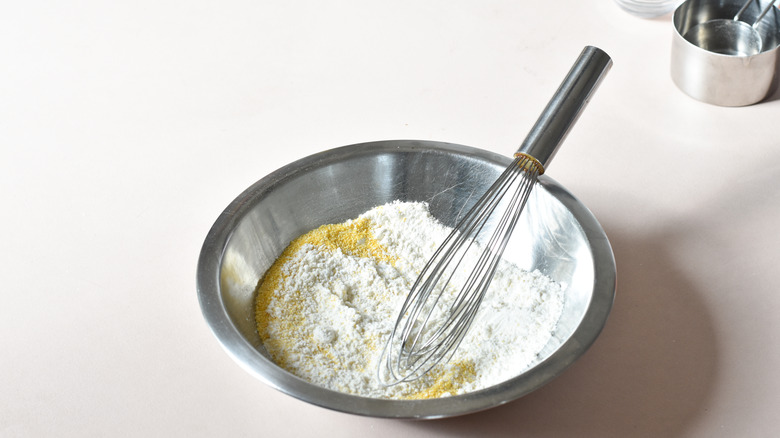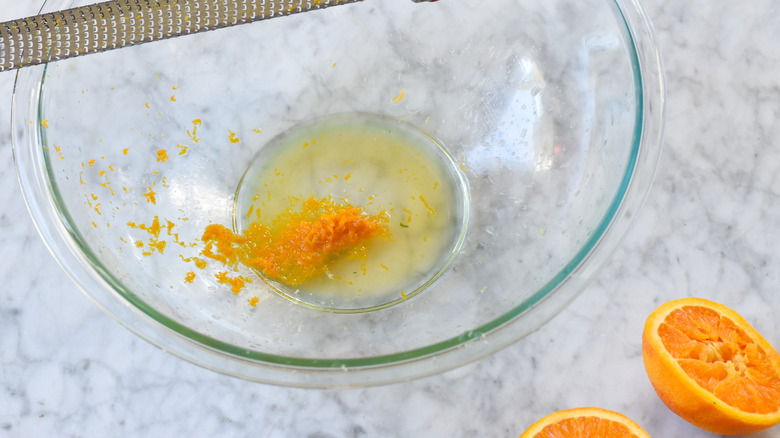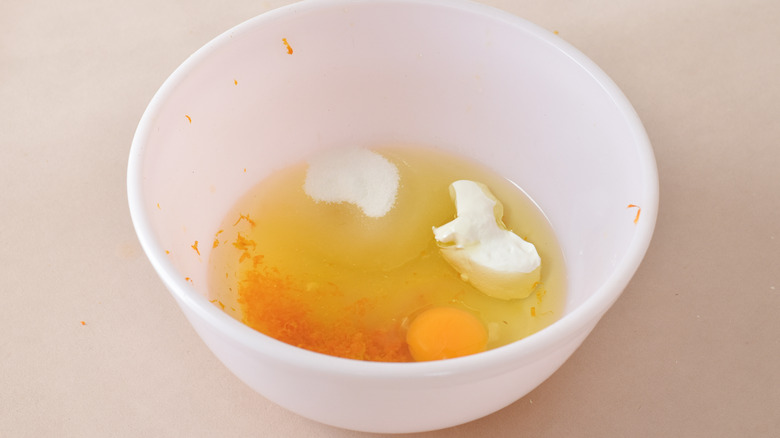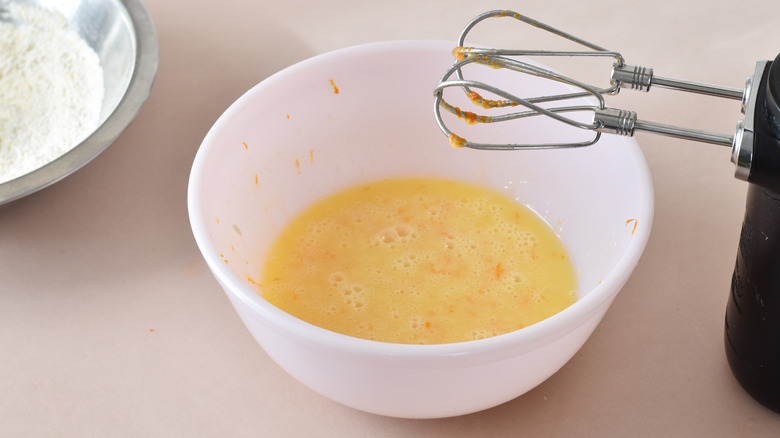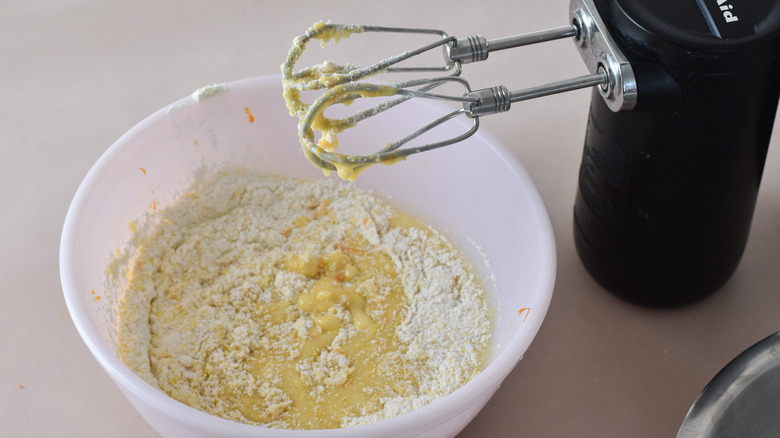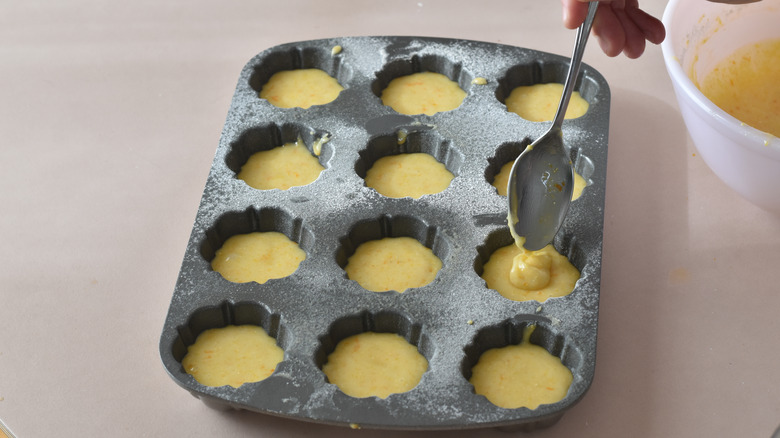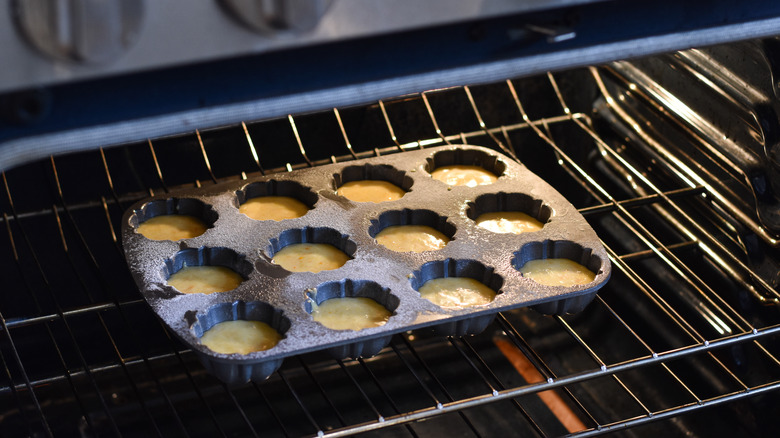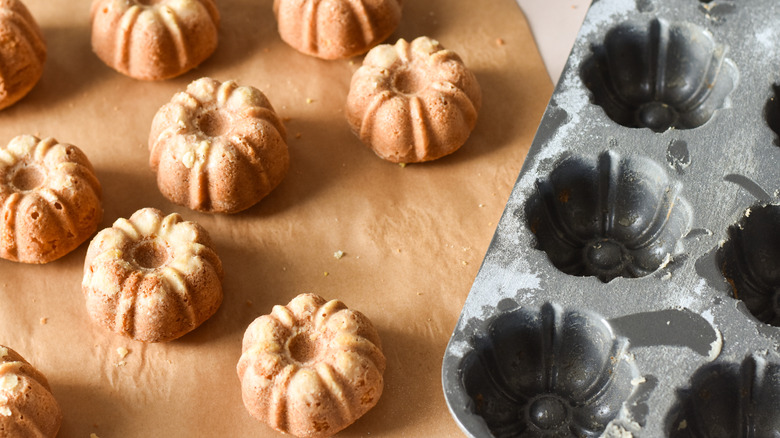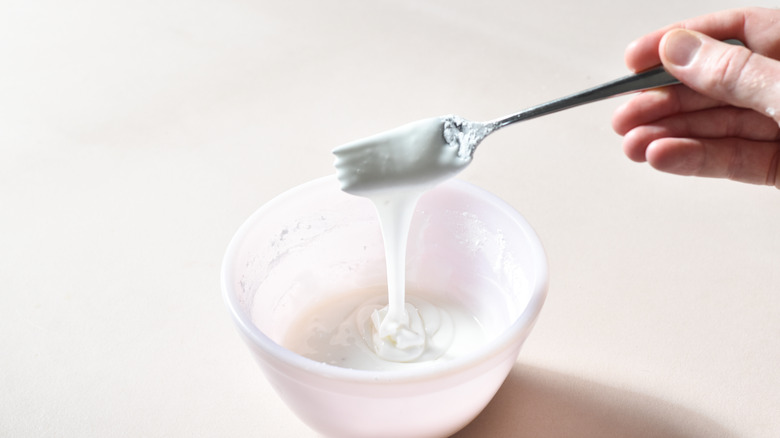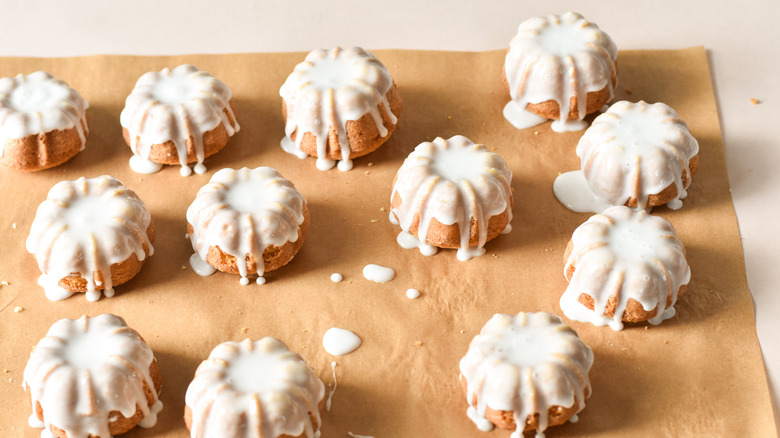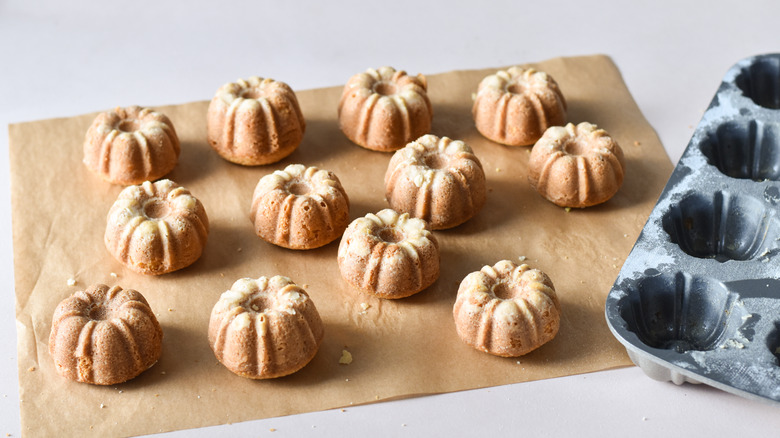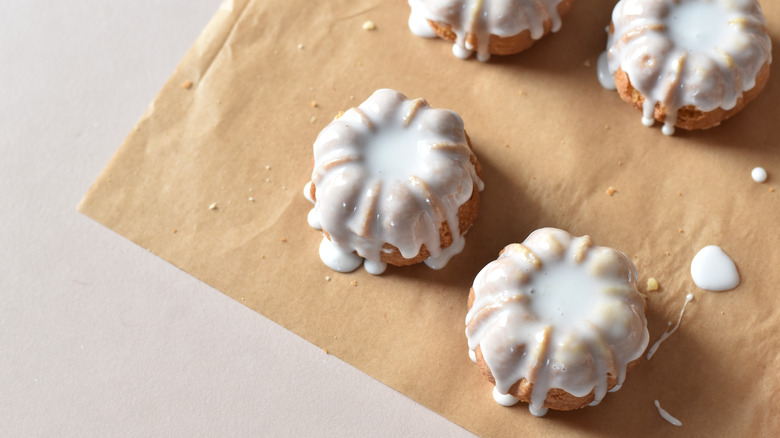Olive Oil Polenta Cake Recipe
"The best time to bake is when you have friends coming over," says recipe developer Alexander Roberts. "I love keeping an arsenal of ready-to-go quick bakes in my recipe files for last-minute visits or unexpected company." Roberts' latest recipe for olive oil polenta cakes fits perfectly into that category. "These take no time at all and they're just as cute as they are delicious," says Roberts.
Perhaps best known as the base of a savory porridge, polenta can also be used in cakes and other desserts. When used in baked goods, polenta provides a lightly sweet note of corn. Since it's gluten-free it will produce a more tender cake, allowing you to use less flour. The fruity, bright, and herbaceous flavors of olive oil pair excellently with citrus and polenta, resulting in a cake with subtle sweetness. When possible, it's best to use a higher-quality olive oil, which will always have more flavor.
To make these olive oil cakes, you can mix up a quick batter by hand — no mixer required. This is the perfect time to pull out your miniature Bundt pan if you have one in your kitchen. If you don't, no worries, you can just use a cupcake pan instead. Once the cakes are baked, let them cool briefly, then dip them in a powdered sugar glaze. Leave them to set for a few minutes and they're ready to be served with tea, coffee, or a thoughtfully-paired cocktail.
Grab the ingredients for olive oil polenta cak
These olive oil polenta cakes only call for a handful of ingredients, which are probably already in your cabinet. Olive oil, polenta, flour, baking soda, and baking powder are the main pantry ingredients you'll need. You'll also want sugar, salt, sour cream, one egg, and some fresh orange juice for flavor. We'll make the most of the orange and use its zest as well, which will punctuate the cakes with a citrusy burst of flavor. When it's time to mix up the glaze for topping the miniature bundt cakes, you'll simply need powdered sugar and a few tablespoons of milk.
Step 1: Preheat the oven
Preheat the oven to 350 F.
Step 2: Grease the bundt pan
Grease a 12-cup miniature bundt pan (or muffin pan) with cooking spray and sprinkle lightly with flour.
Step 3: Combine the dry ingredients
Whisk the flour, polenta, salt, baking soda, and baking powder in a small bowl until combined. Set aside.
Step 4: Juice and zest the orange
Juice and zest the orange into a large bowl.
Step 5: Combine the wet ingredients
Add the olive oil, sugar, sour cream, and egg to the orange juice.
Step 6: Mix on high speed
Whisk on high speed with a hand mixer for 1 minute, until pale yellow.
Step 7: Finish mixing the batter
Mix in the dry ingredients on low speed.
Step 8: Portion the batter
Portion the batter evenly into the cups of the bundt pan.
Step 9: Time to bake
Bake for 18 to 20 minutes, until a toothpick inserted into one of the cakes comes out clean.
Step 10: Cool, then release from the pan
Cool for 5 minutes, then remove the cakes from the pan.
Step 11: Make the glaze
Mix the powdered sugar and milk together to form a glaze.
Step 10: Top with glaze and serve
Dip the top of each cake in the glaze and let sit 10 minutes to set. Serve and enjoy!
Why are my bundt cakes stuck in the pan?
Oh, no ... Not again! You've spent time and ingredients to mix up a cake batter and waited for it to bake only to find out it's stuck in the pan. Bundt pans are filled with nooks and crevices to create an attractive design and to promote browning and a firm outer crust, but these same design features can cause the cakes to get stuck in the pan or to fall apart when inverted.
It's important to thoroughly grease and flour the pan and to make sure your cakes are fully baked before removing them from the oven. Be sure to coat the Bundt pan evenly with cooking spray. You can use butter, but cooking spray provides more even coverage. Once the pan is coated with spray, lightly sprinkle flour over the entire surface and shake it out to make sure there's none pooled in the bottom. You can find some non-stick baking sprays with flour already mixed in that do this job entirely for you.
Be sure to use the toothpick test when baking the Bundts. Insert a toothpick into the center of the cake, and when you remove it, it should be clean — little to no crumbs or batter. Let the cake cool for 5 to 10 minutes at the most when using a miniature Bundt pan (10 to 20 minutes if using a large pan), as warm cakes tend to release more easily.
What kind of polenta should I use? Is there a substitute?
If you've never used polenta for baking, you might be confused as to which type you should grab at the grocery store. There's coarse, quick-cooking, and even pre-cooked polenta (which we definitely don't want in this cake recipe). If possible, use quick-cooking polenta, which is also sometimes labeled as fine yellow polenta. Coarse polenta will work as well although the cakes might have a slightly grittier texture.
If you can't find any polenta or you feel like experimenting with different types of flour, you have a few options. The first and probably best option would be fine or medium yellow cornmeal. You might be asking yourself, what is the difference between cornmeal and polenta? At the end of the day, they're both dried corn. Cornmeal is ground finer, to an almost powdery consistency. This makes it perfect when you want to use a larger ratio of cornmeal to flour. Using too much polenta (more than half) can cause a sandy texture since it is ground more coarsely than cornmeal.
You could also swap in semolina flour (3 tablespoons instead of ¼ cup), almond flour (use ¼ cup), or regular all-purpose flour (use ¼ cup) in place of the quarter cup of polenta. If you use semolina flour, the cake will have a tighter crumb, and if you use almond flour, it will be a bit lighter.
Olive Oil Polenta Cake Recipe
With olive oil for a subtle, fruity flavor and polenta for a tender texture and touch of sweetness, these pretty little cakes come together in no time.
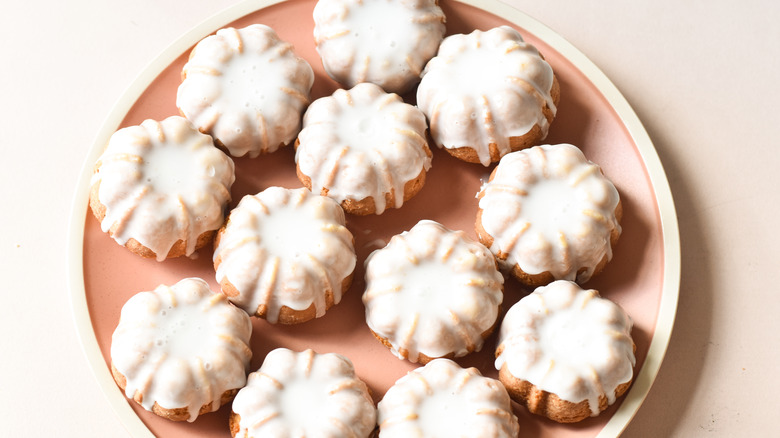
Ingredients
- 1 cup all purpose flour
- ¼ cup polenta
- ¼ teaspoon salt
- ¼ teaspoon baking soda
- ¾ teaspoon baking powder
- 1 orange
- ½ cup olive oil
- ½ cup sugar
- 2 tablespoons sour cream
- 1 egg
- 1 ½ cups powdered sugar
- 2 tablespoons milk
Directions
- Preheat the oven to 350 F.
- Grease a 12-cup miniature bundt pan (or muffin pan) with cooking spray and sprinkle lightly with flour.
- Whisk the flour, polenta, salt, baking soda, and baking powder in a small bowl until combined. Set aside.
- Juice and zest the orange into a large bowl.
- Add the olive oil, sugar, sour cream, and egg to the orange juice.
- Whisk on high speed with a hand mixer for 1 minute, until pale yellow.
- Mix in the dry ingredients on low speed.
- Portion the batter evenly into the cups of the bundt pan.
- Bake for 18 to 20 minutes, until a toothpick inserted into one of the cakes comes out clean.
- Cool for 5 minutes, then remove the cakes from the pan.
- Mix the powdered sugar and milk together to form a glaze.
- Dip the top of each cake in the glaze and let sit 10 minutes to set. Serve and enjoy!
Nutrition
| Calories per Serving | 236 |
| Total Fat | 10.0 g |
| Saturated Fat | 1.6 g |
| Trans Fat | 0.0 g |
| Cholesterol | 14.8 mg |
| Total Carbohydrates | 35.4 g |
| Dietary Fiber | 0.7 g |
| Total Sugars | 24.3 g |
| Sodium | 105.2 mg |
| Protein | 2.0 g |
